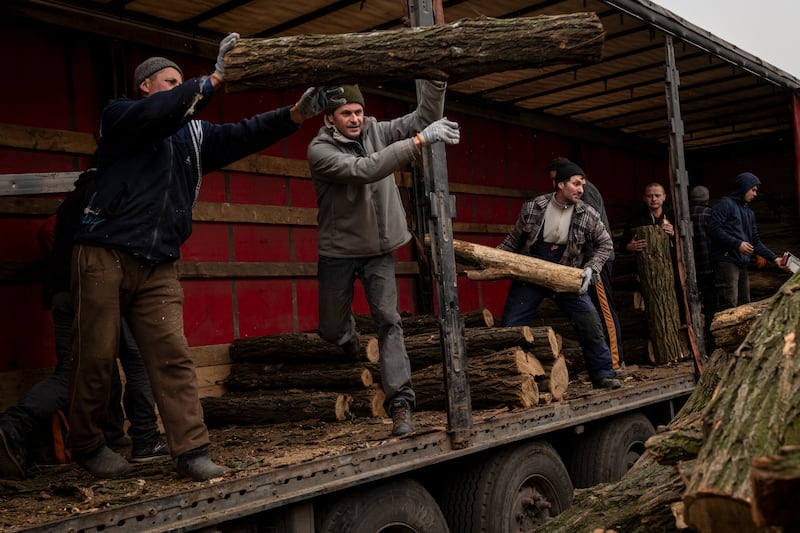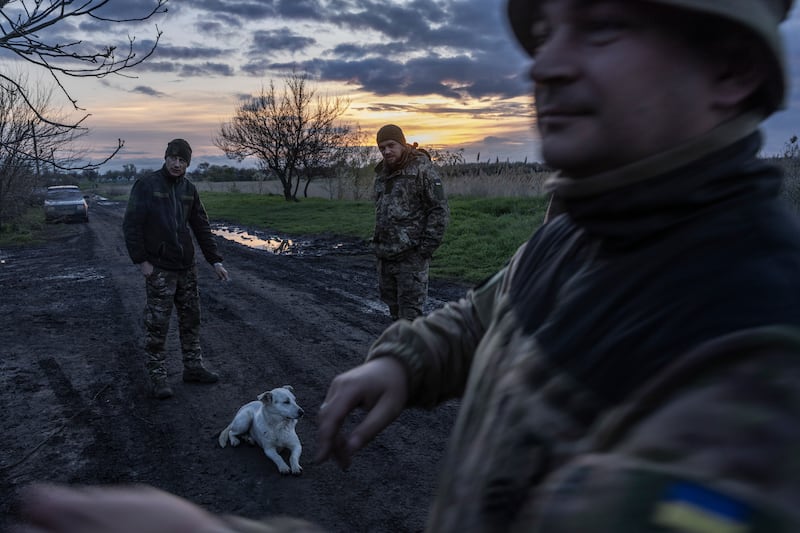People living in Russian-occupied areas of southern Ukraine described in recent days an atmosphere of confusion, defiance and scarcity, as occupation authorities ordered tens of thousands of civilians to evacuate in the face of a looming Ukrainian offensive.
The New York Times communicated with more than a dozen people in occupied towns and villages in the Zaporizhzhia and Kherson regions of Ukraine, by phone and through secure messaging applications. They said petrol stations were running dry, shop shelves were emptying and ATMs were out of cash.
“They discharge people from the hospitals and take away the equipment,” said Andriy (38), a resident of occupied Kamianka-Dniprovska in the Zaporizhzhia region of southern Ukraine. “Then they close them. No one explains why and for how long. And people are afraid to ask since there are armed soldiers around.”
Access to occupied areas is heavily restricted, and the accounts of residents could not be independently verified. Some of those interviewed were reached with the assistance of exiled local officials; others were contacted through relatives in the capital, Kyiv, or after they posted about the evacuation orders on social media.
Russian officials accuse Macron of pushing Europe towards world war
Indulging Kleptocracy: How democracies hollow themselves out as thieves take advantage
Macron open to extending French nuclear protection to European allies
Taoiseach and UK prime minister to discuss potential Ukraine peace deal at Liverpool summit

With heavy fighting expected soon, the message from occupation authorities has been clear for days: Leave now. Most civilians fled the area long ago – primarily to Ukrainian-held territory – but Ukrainians say that despite hardship and fear, most of those who remain are staying.
On Friday, occupation authorities in the Zaporizhzhia region – partially occupied by Russian forces, and one of the areas along the long front line where Ukraine could try to break through Russian defences – issued evacuation orders for 18 towns and villages, citing intensified fighting.
About 70,000 people in the region were expected to be moved, a Kremlin-appointed regional official, Andrey Kozenko, told Russia’s state-run Tass news agency. But it was not immediately clear where they would go, and while the evacuation was described as mandatory, there appeared to be little effort to force people to leave.
Occupation authorities have in the past presented mandatory evacuations as a humanitarian gesture, although an evacuation order in part of the Kherson region last fall preceded a Russian military retreat.
In Zaporizhzhia, there is no indication of Russian troops withdrawing, according to Ukrainian military officials and Western military analysts, who say Moscow’s troops continue to expand defensive fortifications, a sign they are digging in for combat.
Both sides in the war have stepped up strikes in recent days, as Ukraine says it is in the final stages of preparing a counteroffensive.
In the areas affected by Russian evacuation orders, few people appeared to be heeding them.
Bohdan Starokon, the exiled head of the Vasylivka district administration in the region, said about 80 people of the roughly 5,000 people who remained in the town – out of a pre-war population of 22,000 – had agreed to evacuate on Sunday.
Halyna (58), a resident of the occupied town of Polohy, said Russian authorities abruptly announced the end of the school year Friday. Scores of buses were brought in and residents were told to board with only what they could carry, said Halyna, who, like others interviewed for this article, asked that only her first name be used because of safety concerns.
After the buses departed, Halyna added, occupation authorities pulled aside parents who had refused to evacuate and forced them to sign papers acknowledging that they were informed of the risks and took responsibility for their actions.

Artur Krupskyi, the exiled Ukrainian head of the Polohy regional administration, said other residents of the town told him they saw schoolbuses accompanied by police cars leaving Polohy and travelling south, toward the coastal city of Berdiansk.
The Ukrainian military’s general staff said on Sunday that Russian occupation authorities were moving civilians to “recreation centres ” in Berdiansk and Prymorsk, a coastal town. The first people to be evacuated were those who had agreed to take up Russian citizenship in the early months of the occupation, it said.
“It’s mostly the collaborators who are leaving,” he said in an interview. “Many of them hope to get to Crimea.”
Serhiy (40), lives not far from the front line in the village of Mala Bilozerka. He said Russian authorities had told residents over the weekend where to gather at 9am to take buses farther south.
“Some people came with their bags, but as the bus arrived the driver said that he has no gas and evacuation will not happen today,” he said.
The situation appeared to be particularly chaotic in the town of Enerhodar, home to many people who work at the Russian-occupied Zaporizhzhia Nuclear Power Plant. The United Nations’ nuclear watchdog agency warned over the weekend that evacuating Enerhodar could increase the risk of an accident at the facility and expressed alarm over the “increasingly tense, stressful, and challenging conditions for personnel and their families.”
The precarious situation at the plant, on the Dnieper River south of the city of Zaporizhzhia, has been a focus of international concern over the possibility of a big radiation release. It has been hit repeatedly by gunfire and shelling.
Many nearby residents have fled because of fighting in the vicinity of the plant. But Enerhodar’s exiled mayor, Dmytro Orlov, said on Sunday that conditions were deteriorating further, and that the evacuation order had caused “panic.”
Gas stations were out of fuel, hospital equipment was being looted and the cost of medicine and supplies had “risen noticeably,” according to a Telegram post by Orlov, who remains in contact with people there.
Mykhailo, an Enerhodar resident, said in a text message that when residents went to one local store over the weekend, a Russian official approached them and said it was closed.
Asked when the store would reopen, Mykhailo said, the soldier replied: “Never again.”
– This article originally appeared in The New York Times.

2023 The New York Times Company












